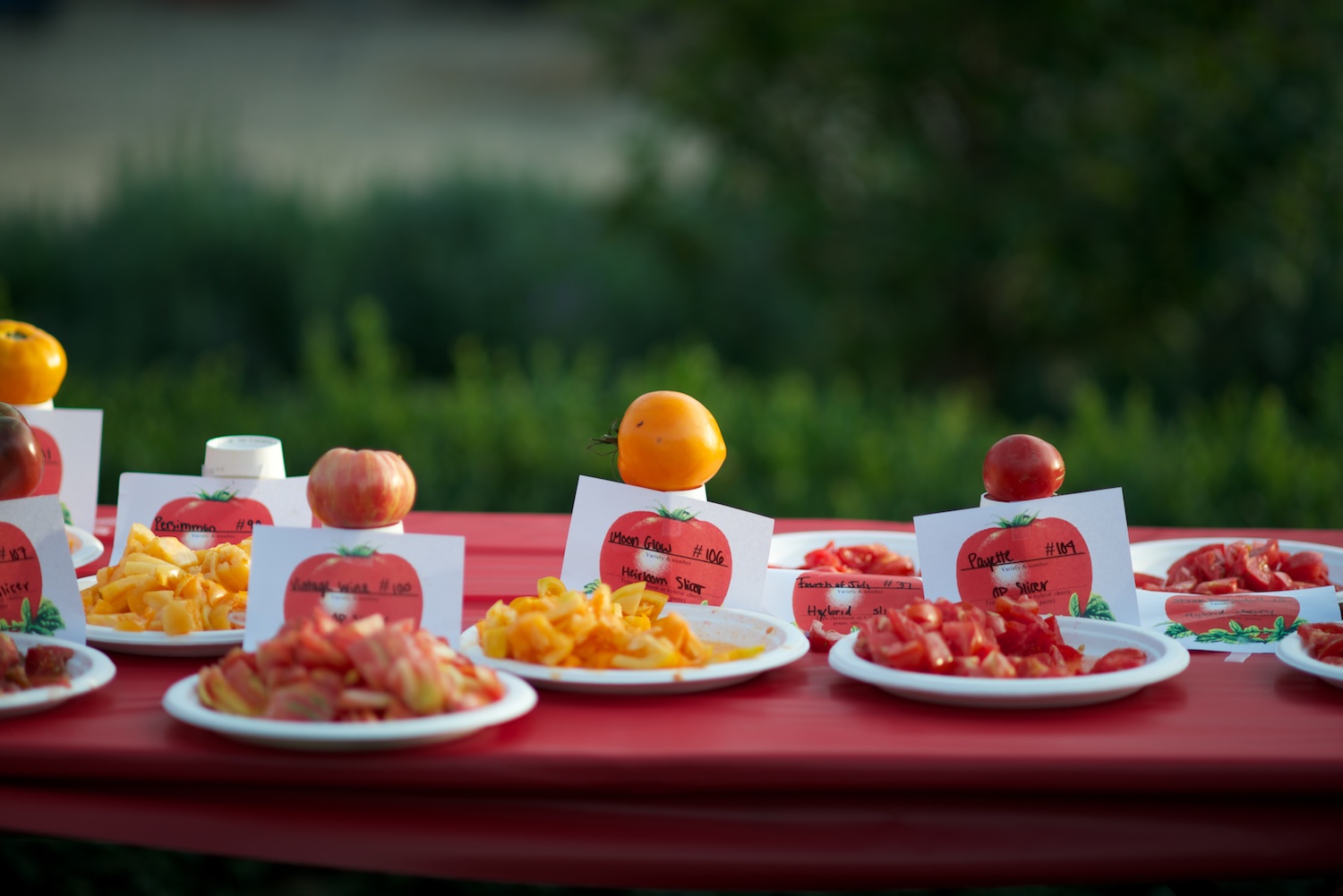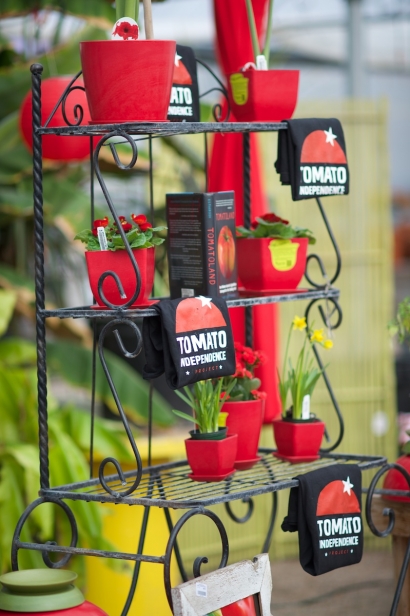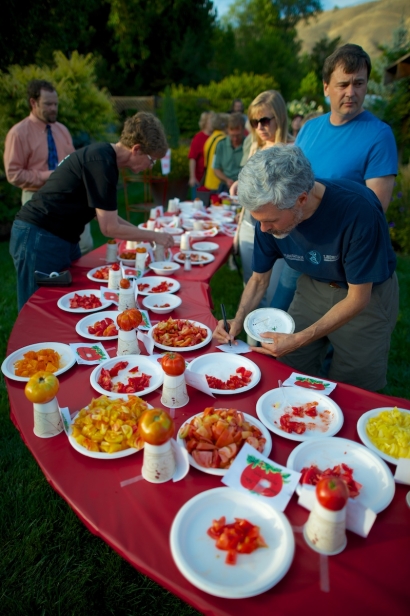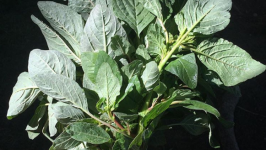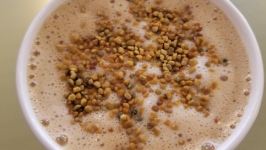Building a Better Tomato
“End the tyranny of tasteless tomatoes!” says Treasure Valley Food Coalition (TVFC) member Janie Burns.
Idaho farmers ship out most of what they grow as bulk commodities while nearly 95 percent of the fruits, vegetables and meats we Idahoans actually eat are shipped in from somewhere else. The TVFC wants to see that reversed, starting with the popular ‘gateway’ vegetable, tomatoes. Fed up with the rock-hard texture of out-of-state tomatoes being bred for better shipping qualities, they believe that flavor has taken a back seat.
“The term that’s used is ‘acceptable,’” says Janie Burns, wrinkling her nose. “That really offends me, that our taste is just ‘acceptable.’”
Knowing most Americans eat about 90 pounds of tomatoes annually, the TVFC encouraged stepping up quality and spent 2013 organizing what they call the Tomato Independence Project (TIP) where attendance to workshops tripled what was expected. They partnered with local nurseries selling TIP kits containing instructions and seeds chosen specifically for our area (Tumbling Tom Red, Early Girl, Sun Gold and Mortgage Lifter). They also created a Facebook page loaded with information and “tomato tidbits.” As a result, the Treasure Valley yielded a whole lot of great tasting tomatoes from its yards and patios, and TIP was embraced not only by locals, but by Gourmet magazine’s former editor Ruth Reichl, who “fell in love” with the project.
Although TIP has made the project fun with a slogan, T-shirt and even a song, it has a serious side. Part of that is an economy thing. The Treasure Valley spends around $15 million on tomatoes yearly and a total of $4 billion on food.
“If we buy locally, the money and jobs stay here,” Burns says. TIP’s goal is to see 20 percent of our food grown here by 2020, providing Idahoans with a stronger independence through what we produce.
There’s a longer-range problem Burns thinks not everyone sees. Nutritional value has taken a nosedive, meaning consumers aren’t getting vitamins and nutrients from the produce that they once were. Burns feels that when we sacrifice quality for convenience, the price paid will be high.
“It takes some thinking to connect the dots,” she says. “We’re putting them out there, and some make the connection. We’re paying for it now in poor health, in our children’s poor health. This could create a train wreck, and thirty years from now when it manifests more fully, it will be too late. We may not have the science to say that eating (a homegrown tomato versus one that’s shipped in) is going to cause heart disease or arthritis, but look what’s happening now with gluten. It’s a difficult argument, unless it’s you.”
Burns tells of a customer who casually bought her farm’s organic produce at the farmers market until the year that customer’s husband was diagnosed with cancer. That season the couple went vegetarian and bought out the remainder of Burns’ carrot crop.
“That’s the audience that really listens.”
Producing tomatoes in our own backyards would change things, Burns says. Gardeners would compare notes, maybe have a little healthy competition. Everyone would eat well and have more control over their diet. Surplus could feed those without enough food and frontyard gardens could replace the somewhat vanishing front-porch culture.
A new phase began in 2014, with a focus on preservation in the form of canning, freezing and dehydrating. Burns says that once they’ve taught the public how to grow tomatoes, they need to know what to do with them.
“We all know it’s not possible to enjoy local, fresh produce in midwinter, but it is possible to open a jar of summer sunshine to give us a taste of what’s to come,” says Amy Hutchinson, one of six TVFC board members.
TIP’s message has now reached hundreds and it’s gaining a lot of support. Boise restaurants like Café Vicino (now closed) and The Modern Hotel brainstormed with growers, Idaho’s Bounty, the Boise Co-op and others at a special TIP-sponsored dinner and discussion concerning buying local tomatoes and how to utilize those preserved for year-round usage. The vision is carried forward by those businesses willing to extend dollars and effort on behalf of the bigger picture as they participate in “Tomato Tuesday Specials” in August, and the more recent “Saucy Saturday” at Edwards Greenhouse featuring sauces prepared by local chefs using 2013’s preserved tomato harvest.
Other planned events include tomato and Bloody Mary tastings, a salsa festival, classes on seed saving, tomato preservation and sauce preparation.
At the end of the Tomato Independence Project’s very productive and informative dinner, Janie Burns stood to thank everyone there, then added, “We can’t do this by ourselves.”
Treasure Valley Food Coalition | @treasurevalleyfoodcoalition
Tomato Independence Project
Ruth Reichl | @ruthreichl
The Modern Hotel | @modernhotel
Idaho’s Bounty | @idahosbounty
Boise Co-op | @boisecoop
Edwards Greenhouse | @edwardsgreenhouse


